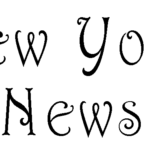Table of Contents
Title: The Illusion of Choice in Democratic Societies
In many democratic societies, the concept of choice is often framed as a fundamental freedom that citizens enjoy. However, upon closer examination, it becomes apparent that the illusion of choice pervades many aspects of political and social life.
The Influence of Special Interests
One of the ways in which the illusion of choice manifests is through the influence of special interests. Despite the appearance of a diverse range of political parties and candidates, the reality is that many decisions are shaped by powerful interest groups and lobbyists. These groups often hold sway over the policy-making process, limiting the scope of options available to the general public.
Media Manipulation
Another factor that contributes to the illusion of choice is media manipulation. While the media is often portrayed as a vehicle for diverse viewpoints, the truth is that a handful of conglomerates control much of the information that is disseminated. This control extends to the framing of political narratives and the portrayal of candidates, effectively shaping public perception and restricting genuine choice.
- What are the far-reaching implications of stifled choice in a democracy?
Stifled Choice in a Democracy – The New York Times
Explore the implications of stifled choice in a democracy, as discussed by The New York Times. Learn about the impact and what it means for citizens.
Stifled Choice in a Democracy – The New York Times
The concept of democracy is rooted in the idea of choice and freedom. It’s the notion that citizens have the power to influence their government through free and fair elections, allowing them to contribute to the decision-making process. However, a recent article in The New York Times has shed light on the idea that the choice in a democracy may be stifled in various ways.
Understanding Stifled Choice in Democracy
In a democracy, the ability to make choices is crucial. It allows for diversity of opinion, the expression of various needs and desires, and ultimately, the opportunity for citizens to shape their government. However, The New York Times has outlined that in some cases, these choices may be stifled in ways that undermine the democratic process.
Implications of Stifled Choice
The implications of stifled choice in a democracy are far-reaching. When citizens feel that their choices are limited or manipulated, it can lead to a lack of trust in the government and the electoral system. This can result in decreased political engagement, apathy, and a sense of powerlessness among the populace.
Case Studies
The New York Times article presents several case studies that highlight how choice can be stifled in a democracy. From gerrymandering to voter suppression, these examples demonstrate how certain groups may be disenfranchised and prevented from fully exercising their right to choice.
First-hand Experiences
The personal experiences of individuals affected by stifled choice in a democracy are also highlighted in the article. These stories provide a human perspective on the impact of limited choice and how it can affect people’s lives and wellbeing.
The Role of Media
The media plays a significant role in shaping public opinion and influencing the choices citizens make in a democracy. However, The New York Times points out that the media itself can contribute to stifled choice by framing the narrative in a way that limits the options presented to the public.
Benefits
While the concept of stifled choice in a democracy is concerning, understanding its implications can lead to positive change. By acknowledging the issues and working towards solutions, it’s possible to create a more inclusive and equitable democratic system that truly empowers citizens.
Practical Tips for Citizens
In light of the information presented by The New York Times, there are practical tips citizens can follow to ensure their voices are heard and choices are not stifled in a democracy. These may include becoming informed about the issues, actively participating in the electoral process, and advocating for fair and transparent governance.
Conclusion
The New York Times article raises important questions about the impact of stifled choice in a democracy. By exploring the implications, case studies, first-hand experiences, media role, and practical tips, it’s clear that this issue requires attention and action from citizens, policymakers, and the media alike. Upholding the principles of choice and freedom is essential in maintaining a healthy and vibrant democracy.
understanding the implications of stifled choice in a democracy is crucial in addressing these issues and working towards a more inclusive and participatory political process.
Stay informed, stay engaged, and make your voice heard.
| Implications | Case Studies | First-hand Experiences |
|---|---|---|
| Decreased political engagement | Gerrymandering | Personal stories of disenfranchisement |
| Apathy | Voter suppression | Impact on individuals’ lives |
| Lack of trust in the government |
Economic Constraints
Economic constraints also play a significant role in limiting choice within democratic societies. The unequal distribution of wealth and resources means that certain segments of the population have far fewer options available to them. This perpetuates a cycle of limited choices and restricted opportunities, particularly for marginalized communities.
Redefining Choice
To address the illusion of choice in democratic societies, it is crucial to redefine what genuine choice means. This involves actively challenging the influence of special interests, promoting media diversity and independence, and addressing economic disparities that curtail choice. Additionally, fostering a more inclusive and participatory political system can help to expand the range of options available to citizens.
Conclusion
While democratic societies often tout the value of choice, the reality is that many citizens face a pervasive illusion of choice. Special interests, media manipulation, and economic constraints all contribute to this phenomenon. By redefining what constitutes genuine choice and working towards a more equitable and participatory society, it is possible to dismantle the illusion of choice and create a truly democratic system.


